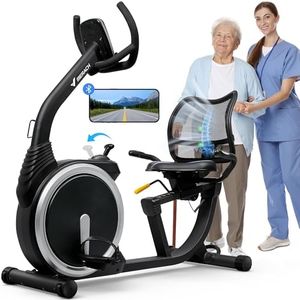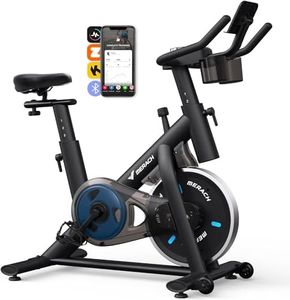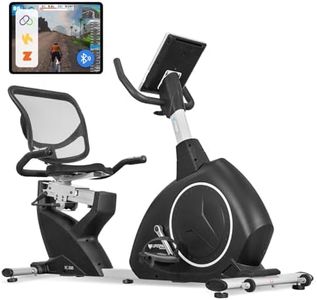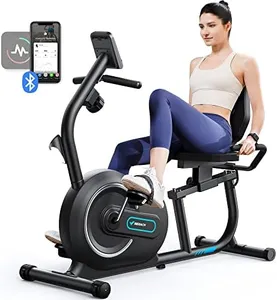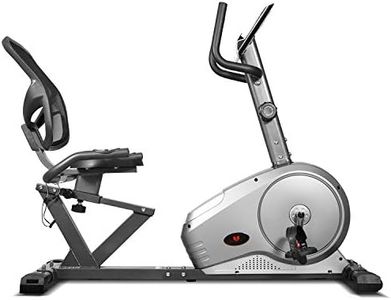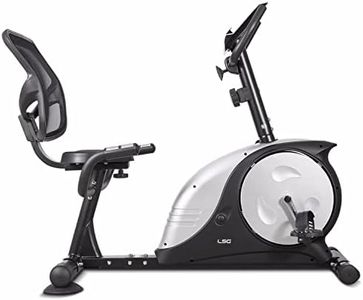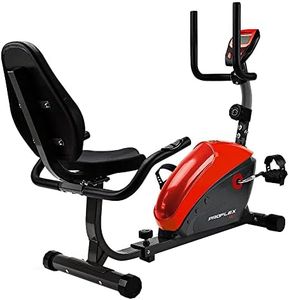We Use CookiesWe use cookies to enhance the security, performance,
functionality and for analytical and promotional activities. By continuing to browse this site you
are agreeing to our privacy policy
7 Best Recumbent Exercise Bikes
From leading brands and best sellers available on the web.By clicking on a link to a third party's website, log data is shared with that third party.
Buying Guide for the Best Recumbent Exercise Bikes
Choosing a recumbent exercise bike can greatly impact your comfort and motivation when working out at home. These bikes are designed with a laid-back seating position, which puts less strain on your back and joints compared to upright bikes. When picking the right one, it's important to think about how often you'll use it, your fitness goals, and any physical needs or limitations you might have. By understanding the main features, you can make a well-informed decision that matches your lifestyle and helps you stay consistent with your exercise routine.Seat Comfort and AdjustabilityThe seat in a recumbent exercise bike is crucial for comfort during long workout sessions. This includes both the padding of the seat and the support for your back, as well as how easily you can adjust the distance from the pedals. Some seats offer greater adjustability to accommodate different user heights and body types. If the bike will be used by more than one person, easy adjustment is especially helpful. It's important to look for a bike where you can securely lock the seat in a comfortable position. For users with back or mobility concerns, a wider, more supportive seat and backrest are preferred.
Resistance LevelsResistance refers to how hard it feels to pedal the bike. This is usually controlled by a magnetic mechanism, and bikes offer a range of resistance settings. Lower resistance levels are good for beginners or those focused on gentle rehabilitation, while higher levels provide a challenging workout for more experienced users. More resistance settings allow for gradual progression and fine-tuning of your workouts. Pick a bike with a range that matches your fitness level, and consider if you want room to grow as you get stronger.
Display Console and ProgramsThe display console shows important workout information like time, speed, distance, calories burned, and heart rate. Some bikes also include built-in workout programs that automatically adjust resistance for variety or specific goals. A clear and easy-to-read screen makes tracking your progress simpler, while more built-in programs can keep workouts interesting. Think about whether you like tracking specific stats or following preset routines, and pick a bike that matches your preference.
Step-Through Frame DesignA step-through frame lets you get on and off the bike easily because there’s no high bar to climb over. This is especially important for anyone with limited mobility, balance concerns, or who is recovering from injury. If ease of access is a priority for you, look for a low or open frame design.
Weight Capacity and StabilityWeight capacity is the maximum user weight the bike can safely hold, and stability describes how steady the bike feels during use. A higher weight capacity often means a sturdier, more durable bike. Heavier or more robust frames will feel more stable, which is important if you plan on doing intense workouts or if multiple people will use the bike. Always choose a bike that supports your weight and feels secure while riding.
Size and PortabilityRecumbent bikes come in various sizes, and some have wheels to make moving them easier. Consider the amount of space you have available and whether you’ll need to move the bike often. If you’re working with limited space, measure the spot where you want to place the bike and compare with the dimensions given by the manufacturer. For easy storage, look for a lighter model with built-in transport wheels.
